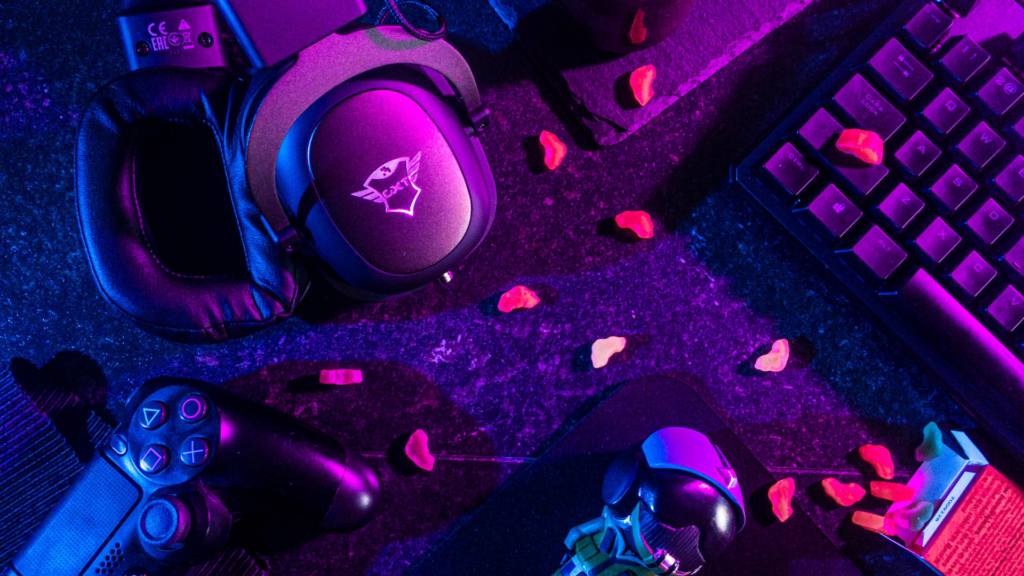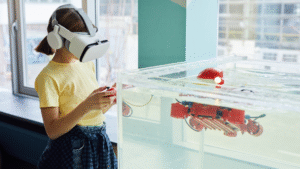Building a gaming PC can seem daunting at first, but it’s a rewarding experience that allows for greater control over performance and customization. To successfully build a gaming PC, one needs to choose compatible components and assemble them with care. Understanding the individual parts, such as the CPU, GPU, and motherboard, is essential to ensure a high-performing system catering to gaming needs.
This guide will take readers through the process of building their gaming PC, covering everything from selecting the best gaming components to practical assembly tips. Many enthusiasts prefer assembling a PC tailored to their specifications rather than opting for pre-built systems, allowing for upgrades and personalization. With the right approach, creating a high-end gaming PC build can be both enjoyable and educational.
Choosing the Right Components
When building a gaming PC, selecting the right components is essential for optimal performance. Each element affects how well the system runs games and handles multitasking. The following sections explore key components that influence gaming capability and overall functionality.
Central Processing Unit (CPU)
The CPU is the brain of the computer and significantly influences gaming performance. Popular choices include Intel and AMD processors.
Key Considerations:
- Cores and Threads: Modern games benefit from higher core counts. Look for at least a quad-core CPU, though six or eight cores are ideal.
- Clock Speed: Measured in GHz, higher clock speeds can improve performance in CPU-intensive tasks.
- Compatibility: Ensure the CPU is compatible with the motherboard’s socket type.
Example options:
- Intel i5 series for balanced performance.
- AMD Ryzen 5 series for great multitasking capabilities.
Graphics Processing Unit (GPU)
The GPU is crucial for rendering graphics in games. A powerful graphics card can significantly enhance the gaming experience by providing higher frame rates and visual quality.
Key Considerations:
- VRAM Capacity: Look for a GPU with at least 4GB of VRAM for 1080p gaming, while 8GB or more is preferred for higher resolutions.
- Performance Benchmarks: Check benchmark scores for the latest graphics cards to understand their capabilities.
- Form Factor: Ensure the GPU fits the PC case and check for adequate power supply connectors.
Leading options include:
- NVIDIA GeForce RTX series for high-performance gaming.
- AMD Radeon RX series for competitive pricing and performance.
Motherboard
The motherboard connects all components and affects upgrade paths. It is vital to select a board that supports your CPU and has adequate features.
Key Considerations:
- Socket Type: Ensure compatibility with the chosen CPU (e.g., LGA for Intel, AM4 for AMD).
- Chipset Features: Higher-end chipsets offer more features like better overclocking support and additional USB ports.
- Expansion Slots: Consider the number of PCIe slots for additional GPUs or sound cards.
Popular choices:
- ASUS ROG or MSI gaming motherboards for advanced features.
- Gigabyte boards for solid performance and reliability.
Memory (RAM)
RAM is critical for multitasking and game performance. He/she should select the right type and amount of RAM for their gaming needs.
Key Considerations:
- Capacity: A minimum of 16GB is recommended for modern gaming, with 32GB being ideal for heavy multitasking.
- Speed: Look for DDR4 or DDR5 RAM, with speeds of 3200MHz or higher being optimal.
- Brand Reliability: Consider brands like G.Skill or Corsair Vengeance for robust options.
Options include:
- 16GB (2x8GB) DDR4-3200 for balanced performance.
- 32GB (2x16GB) DDR5 for future-proofing.
Storage Solutions
Storage affects load times and game installations. A mix of SSDs and HDDs is common for balancing speed and capacity.
Key Considerations:
- SSD vs HDD: SSDs significantly reduce load times while HDDs provide more storage space at a lower cost.
- Form Factor: M.2 SSDs connect directly to the motherboard for increased speeds. SATA SSDs are also viable.
- Capacity: Consider having at least 500GB of SSD storage for fast game access.
Common options:
- 500GB NVMe SSD for speed.
- 2TB HDD for larger game libraries.
Power Supply Unit (PSU)
The PSU delivers power to the entire system and is crucial for stability. Choosing the right PSU prevents power fluctuations.
Key Considerations:
- Wattage: Calculate the required wattage based on component power needs. A 650W PSU is often sufficient for most gaming builds.
- Efficiency Rating: Look for 80 Plus certification for better energy efficiency and reliability.
- Modular vs Non-Modular: Modular power supplies allow for cleaner cable management.
Recommended brands include:
- Corsair and EVGA for reliability and performance.
Cooling Systems
Efficient cooling is vital for maintaining optimal performance and longevity. The choice between air and liquid cooling depends on performance needs and case size.
Key Considerations:
- Air Coolers: Often more affordable, reliable, and easier to install. Options include tower coolers with large heatsinks.
- Liquid Coolers: AIO (All-in-One) coolers provide better performance for high-end CPUs, especially when overclocking.
- Thermal Paste: Always apply quality thermal paste between the CPU and cooler for optimal heat transfer.
Brands to consider:
- Noctua for air cooling.
- Corsair or NZXT for liquid cooling solutions.
Case and Aesthetics
The case houses all components and affects airflow, aesthetics, and upgrade potential. Selecting the right case complements hardware choices.
Key Considerations:
- Size: Ensure the case fits all components, especially the GPU and cooler. Mid-tower cases are versatile.
- Airflow Design: Look for cases with good airflow paths and additional fan mounts for cooling.
- Aesthetic Appeal: RGB lighting and tempered glass panels enhance visual appeal.
Popular cases include:
- Fractal Design Meshify for airflow.
- NZXT H510 for sleek aesthetics.
Assembly and Setup Process
Building a gaming PC involves several crucial steps, from preparing the case to ensuring all components work seamlessly together. Following the correct process is vital for a successful assembly.
Preparing the Case
Begin by selecting a suitable workspace that is clean and static-free. Open the case and remove any unnecessary packaging material, such as foam or plastic. It’s essential to install the motherboard standoffs in the appropriate locations to prevent short circuits. The I/O shield should be fitted into the back of the case; its orientation can be specific to the motherboard type. Refer to the motherboard manual for guidance on standoff placements. Keep screws and small components organized in labeled containers to avoid mix-ups. Make sure to identify your case for adequate airflow management to support cooling during gameplay. Proper preparation sets the stage for a smooth assembly process.
Motherboard Installation
Placing the motherboard correctly is fundamental to ensure all components fit. Align the motherboard over the standoffs and gently lower it into position. Secure it using screws provided with the case, taking care to avoid overtightening as this can damage the board. Before finalizing the installation, connect the CPU and RAM to the motherboard.
Ensure the CPU is seated properly in the socket, aligning the notches before locking it in place. Insert the RAM into the designated slots, ensuring they click firmly into position. Following these steps ensures the motherboard is correctly installed and ready for further components.
Component Connections
Once the motherboard is secure, attention turns to component connections. Begin by attaching the power supply unit (PSU) to the motherboard. Connect the 24-pin ATX power cable and the CPU power connector, ensuring a snug fit.
Next, install the graphics processing unit (GPU) into the PCIe slot. Press down firmly until it clicks into place. Secure it with screws to prevent movement. After installing the GPU, connect any additional power cables if required. Finally, plug in storage devices like SSDs to their designated slots, ensuring secure connections for optimal performance.
Cable Management
Efficient cable management enhances airflow and overall aesthetics. Start by organizing cables behind the motherboard tray, using cable ties to secure them away from moving parts. Group cables that run to the same destination, such as power cables for the GPU and motherboard. Utilise cable routing holes in the case to keep cables out of sight. Titanium and nylon cables are preferable for durability. Performing this step diligently can simplify future upgrades or component replacements, maintaining a clean build.
Testing and Troubleshooting
After all components are connected and the cables are managed, it’s time for power testing. Connect the power supply cable to a wall socket and press the power button on the case. If the PC fails to boot, check that all connections are secure, especially the power cables to the motherboard and GPU. If necessary, consult the motherboard manual for troubleshooting tips. Monitor the system for any error codes through LED indicators and ensure that all fans are operational. Resolving any issues at this stage prevents complications during use and allows for a smooth gaming experience.
Software and Optimisations
Selecting the right software and applying optimizations are critical for a gaming PC’s performance. This section covers installing an appropriate operating system and ensuring all drivers and BIOS are up to date to maximize gaming performance and responsiveness.
Operating System Installation
For gaming PCs, Windows 11 or Windows 10 are the most popular choices due to their robust support for gaming software and hardware. When installing the operating system, it is essential to perform a clean installation to prevent any conflicts with previous configurations.
- Download ISO: Acquire the latest Windows installation media from the official Microsoft website.
- Prepare Bootable Drive: Use tools like Rufus to create a bootable USB drive.
- Install OS: Boot from the USB and follow the prompts for a clean install, ensuring to format of the drive to eliminate old files.
After installation, game performance can be enhanced by disabling unnecessary background applications and services that consume resources.
Driver Updates and Motherboard BIOS
Keeping drivers up to date is vital for optimal performance. This includes GPU drivers from NVIDIA or AMD, which can significantly impact FPS and graphics quality in games. Regularly checking for updates through GeForce Experience or Radeon Software simplifies the process, ensuring the latest enhancements are in place.
Updating the motherboard BIOS is equally important. The BIOS controls hardware settings and can affect stability and performance.
- Check Version: Confirm the current BIOS version via the BIOS setup or the manufacturer’s website.
- Install Updates: Download any available updates and follow the manufacturer’s instructions to install them.
Applying these updates can enable new features and improve compatibility with the latest games, assisting with overclocking capabilities when needed.
Enhancing Your Gaming Experience
To elevate the gaming experience, several key areas require attention, including peripherals, display settings, and software choices. By optimizing these elements, a user can significantly improve performance, responsiveness, and visual enjoyment.
Peripherals and Accessories
Choosing the right peripherals can have a notable impact on gaming performance. Gaming mice, for instance, come equipped with high-DPI sensors, which enhance precision during fast-paced gameplay. Brands like Cooler Master and Logitech offer models tailored for FPS games, ensuring accuracy when aiming. Keyboards also play a crucial role. Mechanical keyboards, particularly those with RGB lighting, provide tactile feedback and programmable keys. This feature is essential for complex commands and custom macros, enhancing gameplay. Furthermore, a quality gaming headset allows for immersive audio experiences. Look for headsets with surround sound capabilities to recognize in-game cues better. A reliable Wi-Fi connection is vital for online gaming, decreasing latency and maintaining a stable connection.
Monitor and Display Settings
The choice of a gaming monitor can significantly affect the visual experience. Monitors with a refresh rate of at least 144Hz improve fluidity in motion, particularly in fast-paced games. Gamers should also consider models with low input lag, which is essential when using powerful components like the RTX 4070 Ti.
For optimal visual quality, 4K gaming monitors are becoming increasingly popular. They offer stunning detail but require a robust system to manage high resolutions. The AMD Ryzen 9 7950X3D with 16GB of RAM paired with the right graphics card can leverage this feature effectively. Tweaking display settings such as brightness, contrast, and color balance will also enhance the overall experience. Enabling technologies like G-Sync or FreeSync can minimize screen tearing, making for smoother gameplay.
Gaming and Streaming Software
The right software can enhance both gaming and streaming experiences. An application like OBS Studio allows for high-quality streaming and recording. Custom configurations can help optimize performance without sacrificing game quality.
Gamers should also explore performance monitoring tools. These can provide real-time data on FPS, CPU temperatures, and GPU usage, enabling better decision-making for settings adjustments. For enhancing gameplay, software utilities can boost performance. Tools that optimize RAM usage and manage background processes ensure a smoother experience, particularly with demanding titles. Brands like Crucial and WD Black SN770 provide solid-state drives that load games faster, reducing wait times and further improving the gaming experience.




